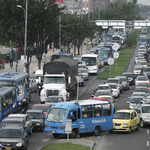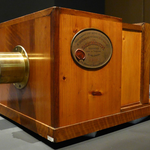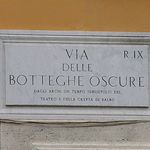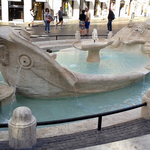Palatino
It is one of the seven hills which keeps the most ancient memories of Rome.
This legendary hill which rises 40 meters to the south of Forum and 51 over the sea level was dominating the Tevere bend with the first harbour of Rome and the same valley of Forum.
It was consisted of three tops: the Palatium, the Germalus, the Velia. The first two assembled hills formed the Roma Quadrata that appeared to be a first nucleus founded by Romolo according to the tradition.
Romulus was the first inhabitant in the hut that spread away to other settlements of the neighbour hills.
It has a trapezoidale form with the longest southern side facing the Murcia Valley where further the Circo Massimo rises up.
The ancient name Palatium probably derives from Pales, which means " goddess of herding" in honour of which Palilia was celebrated. This holiday became then the date of the town's foundation which the Roman official historyography
appointed to the 21st of April in 754 or 753 a.c.
The first traces of huts date to the beginning of the iron age. The huts are settled up exactly in the point where the tradition wanted to place the Romolo's house, which during the imperial age was continuously
restored.
When in 1948 the excavations had brought three huts to the light from the iron age the emotions were very strong: the archaeology approved the myth.
The remains of the Palatine keep the most ancient memories of the town and tell the most ancient traditions of Rome. Here the greeks Evandro and Pallante settled down and were found by Eneus and Hercules.
At its feet there was the Lupercale, the grotto in which the Romolus and Remus were nourished by the mythical Wolf. Here was the House of Romolus where neareby Augustus placed his own house close to the temples and to the public buildings. Later the construction of private buildings belonging to the famous roman citizens like Gracco, Crasso, Cicerone, Clodio began here and the Palatine became a synonymous of residence.
Here the so-called Imperial Palaces were raised then: the Tiberius palace, the Nero's palace (the Domus Aurea reached it up), the Flavia Palace, which was the Domus Augustana, and the Settimio Severo palace. So it became the residence of the emperors enlarged so much for o reduce to the minimum the space covered by private residences to the minimum.
The name Palatium acquired later the meaning of an imperial residence and it became a common name in all the European languages.
Later undertaking frequent absence of Roman emperors and the decay of the town, the Palatine was also declining but remaining official residence of the gothique kings and the bysantine tsars. Popes and emperors ending by Ottone III of the new Western Empire also lived there .
After the first century, inside and beyond the ancient ruins convents, churches, gardens,fortifications of nobles rised up here. Especially the Frangipane dominated here in a castle built on ancient ruins.
In 1535 Vignola designed for Alessandro Farnese a villa with splendid gardens, and a big part of the hill was changed into the pleasant and sumptuous Farnese villa (dismantled in the end of '800 caused by some archaeological excavations). Farnesiani Orchards were the first botanical orchards of the world. The property of Farnese passed to the Bourbons of Naples.
In the first half of the XVIIIth century half the excavations began. The Parma dukes excavated and sacked the Domiziano Palace but the regular archaeological exploration directed by P.Rosa started only after Napoleone III had bought the Farnesiani Orchards in 1860.
Having united Rome and Italy, the Italian government bought it from Napoleone III and firstly initiated the excavations under the Rosa, the Vaglieri and the Boni. The last one revokes the ancient memories of the central part of the Palatine with interesting paintings of the Republican age.The excavation of the Domus Augustana and the restoration of all ruins which stretched out on the valley of the Circo Massimo owe themselves to Bartoli.
Under the direction of successors the excavations brought o the light the remains of primitive huts and other structures.
On the oriental side of the Palatine the new entry to the excavations from the Via di San Gregorio has been reset and formed with the monumental Cinquecento portal which until1882 gave an access to the Farnesiani Orchards from the side of Foro Romano.
The portal appears to be a work of art created by Vaglieri (the lower part) and by Rainaldi (the higher part).

 The records of Rome. Big numbers, not always enviable, for a big city.
The records of Rome. Big numbers, not always enviable, for a big city. New Phot-O-Matic section. To spend some time looking at photos (also) of Rome.
New Phot-O-Matic section. To spend some time looking at photos (also) of Rome. The administrative, urban, toponymic and imaginative subdivisions of Rome.
The administrative, urban, toponymic and imaginative subdivisions of Rome. Notice for tourists: in Rome you drink for free. Historical fountains and 'big noses'.
Notice for tourists: in Rome you drink for free. Historical fountains and 'big noses'. Free museums return on the first Sunday of the month.
Free museums return on the first Sunday of the month.